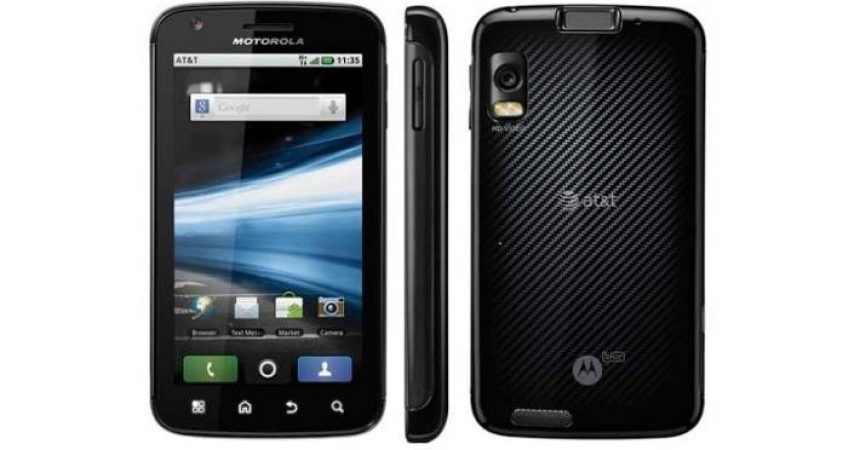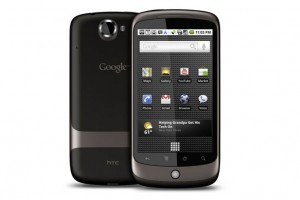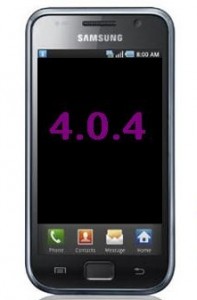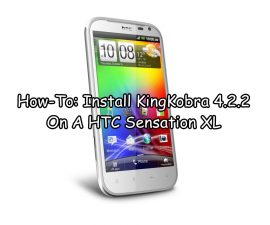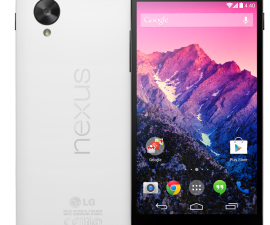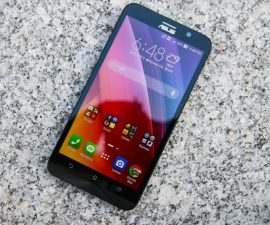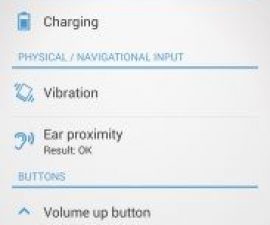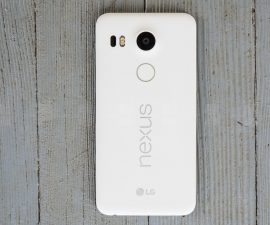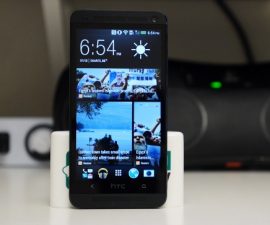The 19 Of The Most Influential Smartphones
The smartphone revolution has been swift and massive. Through the smartphone, almost everyone is not connected to all the world’s knowledge through the internet. The smartphone is a communication tool, a means to access information, a way to get entertainment, a means of navigation and a way to record and share our lives. Smartphones potential to enrich people’s lives are almost unlimited.
According to research from Flurry in 2012, the adoption of leading smartphone platforms Android and iOS is ten time faster than the revolution of the PC, two times quicker than Internet growth, and three times quicker than the adoption of social media. It’s estimated that by the end of the next year, smartphone users will reach more than 2 billion. Already, more than half the American and European populations are smartphone owners. This figure is even higher in countries such as South Korea.
In this review, we take a look at some of the devices that shaped smartphone growth. How was it that, since that first cell phone was released in 1984, we’ve now gone to having global sales of a billion smartphones a year? Which of the previous versions of smartphones most influenced the design and features as well as the functionality of the smartphones we see now?
-
The IBM Simon
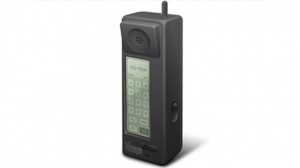
Though the actual term “smartphone” wasn’t used till a few years after this phone was released, the IBM Simon is considered the first smartphone. The prototype was released in 1992, it combined the features of a cellphone with a PDA to enable it to do some of the things we now expect of a smartphone.
- Used a touchscreen
- Could make calls
- Could send emails
- Had apps, including the now standard calendar, notepad and calculator.
- It had the capacity to allow it’s users to get third-party apps, though there was only one such app that was developed at that time.
- Back then it was quite useful that you could also send faxes or pages using the IBM Simon.
The IBM Simon had the following features:
- 5 inch display, monochrome with a resolution of 640 x 200
- 16 MHz processor with 1 MB of RAM
- 1 MB storage
- Weight: 510 grams.
IBM officially released the Simon in 1994, selling it for $1,099 off-contract. Though the Simon was discontinued after only six months, IBM sold 50,000 units. The ideas behind the Simon were ahead of its time but the technology to make it popular wasn’t quite there yet.
-
The AT&T EO 440 Personal Communicator
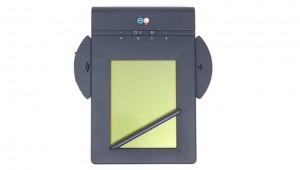
Though it would be an exaggeration to call this device the first phablet, it was being developed at around the same time the IBM Simon was. A lot of the functionality of the IBM Simon was also found in this device.
The AT & T EO 440 Personal Communicator was more or less a phone attached to a PDA that was around tablet size. This device was also known as “PhoneWriter”.
By developing the PhoneWriter, AT&T was attempting to create a common users interface and platform.
-
The Nokia 9000 Communicator
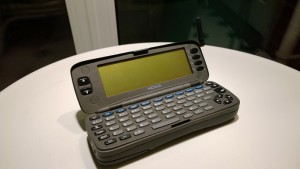
This was released in 1996 and is often cited to be the first smartphone. Nokia aimed the device towards the business world as part of its vision of “office in the pocket”.
The Nokia 9000 Communicator had the following features:
- 24MHz processor
- Storage of 8MB
- Weight: 397 grams.
- Though still brick like in shape, it allowed you to flip the top open to access a larger screen and a keyboard.
- Allowed for text-based browsing
- Ran personal organizer apps on the GOES platform.
In essence, when the hinged top was closed, it was a phone. When it was opened, it could be used like a PDA.
-
The Ericsson R380
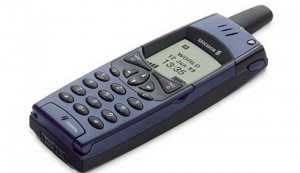
This is the first device that was marketed using the moniker “smartphone”. Released in 2000 for around 1,000 euro (or $900), the Ericsson R380 showed that developers of PDA hardware and software were seeing the possibilities of merging the functionalities of a PDA and a phone.
The Ericson R380 had the following features:
- A large touchscreen accessible by flippind down the keypad
- Ran in the EPOC operating system.
- Supported a lot of apps
- Could synch with Microsoft Office
- Compatible with PDAs
- Allowed for web access, texting, email support, and voice controls.
- Had a game
-
BlackBerry 5810
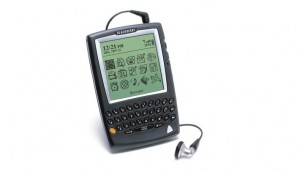
The BlackBerry 5810 was released in 2002 and was the first BlackBerry to combine phone functions into RIM’s messaging devices. RIM popularized push email though their BlackBerry line.
The signature BlackBerry design of a small screen with a keyboard placed underneath gained prominence with this device.
-
Treo 600
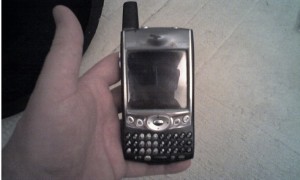
Treo released this device the same year that they merged with Palm. The Treo 600 was an example of a successful combination between a phone and PDA.
The Treo 600 had the following features:
- 144 MHz processor with 32 MB of RAM
- A colored touchscreen with resolution of 160 x 160
- Expandable storage
- MP3 playback
- Built-in digital VGA camera
- Ran on the Palm OS.
- Allowed for web browing and email.
- Had apps for calendar and contacts. This allowed users to dial from their contacts lists while checking their calendar during the call itself.
-
BlackBerry Curve 8300
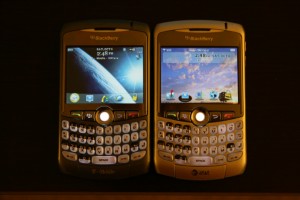
RIM improved this BlackBerry device by giving it a better screen, improving their OS, and ditching the track wheel in favor of a track ball. The Curve 8300 was launched May 2007 as part of the attempt to move BlackBerry’s from the business sphere to the consumer market.
The Curve was popular and featured almost everything else you expect from a modern smartphone. The first models didn’t have Wi-Fi or GPS but those were added in the next variants. By October of 2007, BlackBerry had 10 million subscribers.
-
The LG Prada
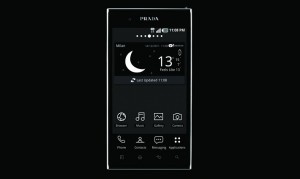
Images of the Prada were found online during the latter part of 2006, garnering it a design award even before it’s official release on May 2007. A collaboration of LG and the Prada fashion house, this was a “fashion phone” that sold more than 1 million units within 18 months.
The LG Prada had the following features:
- Capacitive touchscreen. 3 inches with a resolution of 240 x 4
- 2 MP camera
- 8MB of on-board storage. You could expand this to 2GB with a microSD.
- Several useful apps
What the Prada lacked was 3G as well as Wi-Fi.
Shortly after the Prada released, another phone arrived that many felt was similar in design, Apple’s iPhone. LG would claim Apple copied their design, but the case was never argued in court.
-
The iPhone
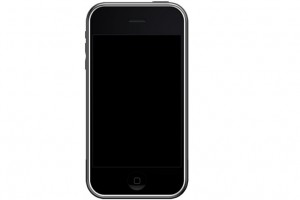
Announced on January 9, 2007, the iPhone was introduced by Steve Jobs as a device that was three products in one. The iPhone was to combine the iPod with a phone and a internet mobile communicator. Goggle was involved with the iPhone, with Google Search and Google Maps built in.
The iPhone was extremely influential and, when it was released in June, 1 million units were sold within 74 days.
The iPhone featured:
- A 3.5 inch multi-touch screen with a resolution of 320 x 480 pixels
- 2 MP camera
- Three varieties of storage: 4/8/16 GB
-
The BlackBerry Bold 9000
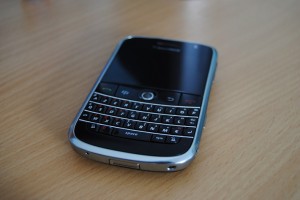
RIM was still considered a top player when it released Bold during the summer of 2008. Going into 2009, BlackBerry subscribers numbered around 50 million and the success of the Bold may unfortunately led RIM to stick with a design that proved to be a dead-end. After the Bold, RIM just took too long to develop a touchscreen OS and allow third-part apps and it was soon left behind.
The Bold featured:
- A 2.6-inch screen with a resolution of 480 x 320 pixels.
- A 624MHz processor
- The best physical keyboard found on smartphones of the day
- Support for Wi-Fi, GPS and HSCPA.
-
The HTC Dream
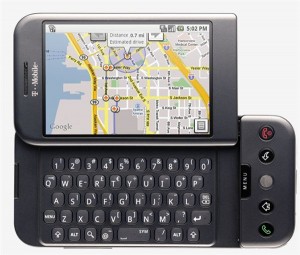
This is the first Android smartphone. Google had formed the Open Handset Alliance and had promised mobile innovations with Android in 2007. The HTC Dream was the result, launching in October 2008.
The HTC Dream was one of the first smartphones to allow typing on their touchscreen – though they also still included a physical keyboard.
Other features of the HTC Dream were:
- Ran on Android
- 2-inch screen with a resolution of 320 x 480 pixels
- 528 MHz processor with 192 MB RAM
- 15 MP camera
-
The Motorola Droid
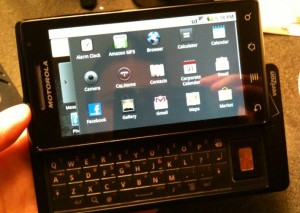
The Droid was developed by Verizon and Motorola in an attempt to back Android as part of the Droid Does campaign. This was an Andorid smartphone capable of outperforming an iPhone.
The Droid was a hit, selling more than a million units in 74 days, beating the iPhones previous record.
Features of the Motorola Droid included:
- Ran on Android 2.0 Éclair
- 7-inch display with a 854 x 480 pixel resolution
- 16GB microSDHC
- Google Maps
- Physical keyboard
- Nexus One
Released by Google January 2010, this phone was sold directly without a SIM and unlocked.
The hardware of the Nexus One was solid and it had the following features:
- Unlockable bootloader
- No more physical keyboard
- Trackball
-
iPhone 4
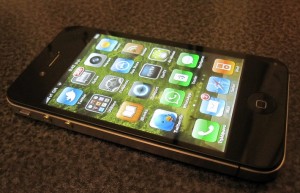
This was launched in the summer of 2010. The iPhone 4 had the following features:
- 5-inch display called Retina. This display had a resolution of 960 x 640.
- A4 chip
- 5MP camera
- iOS 4 which included FaceTime and multitasking
- This was the first iPhone to have a front camera and a gyroscope
- Second microphone to cancel noise
The design of the iPhone 4 – slim, with a stainless steel frame and a glass back – was also widely regarded as praiseworthy.
Apple sold 1.7 million iPhones in the first three days.
-
Samsung Galaxy S
With the Galaxy S, Samsung began the race to be the company that had the best hardware.
The Galaxy S had the following features:
- 4-inch display that used Super AMOLED technology for a resolution of 800 x 480.
- 1 GHz processor
- 5MP camera
- First Android phone to be DivX HD-certified
To please the carriers, Samsung had over 24 variants of the Galaxy S. The Galaxy S would sell over 25 million devices to become the most successful Android smartphone lines of the day.
-
The Motorola Atrix
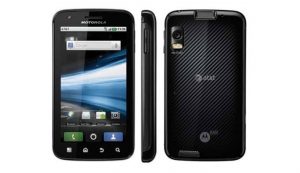
Though a commercial flop, the Atrix is an important smartphone for other reasons. It made headlines for its Webtop platform which allowed the phone to functions like a brain for a laptop dock accessory as well as a HD multimedia dock and vehicle doc.
The idea behind Webtop was interesting but it was not well executed, for one thing, the accessories were much too expensive. Other forward thinking ideas included in the Atrix were a fingerprint scanner and support for 4G.
Other features of the Atrix were:
- 4-inch qHD display for 960 x 540 pixels resolution
- 1930 mAh battery
- 5 MP camera
- 16 GB storage
-
The Samsung Galaxy Note
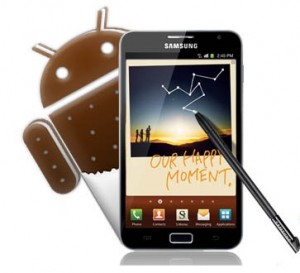
When the Note was released in October 2011, its display was considered ground-breaking because of its size – 5.3 inches. This is Samsungs first phablet and it opened up a new smartphone category.
The phone/tablet hybrid sold more than 10 million units in its first year. Note sequels dominated the phablet market for years until the iPhone 6 Plus and the Nexus 6 arrived.
-
The Samsung Galaxy S3
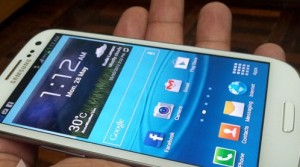
This is Samsung’s most successful smartphone so far. It’s the first Android smartphone that outranks the iPhone in polls. With innovative software features, the Galaxy S3 was a high point for Samsung and set the bar for smartphones to come.
- Slim and rounded design
- 8-inch display with SuperAMOLED technology for 1280 x 72 resolution
- 4 GHz quad-core with 1 GB RAM
- 16/32/64 GB storage, microSD expansion
- 8MP rear camera, 1.9MP front camera
-
LG Nexus 4
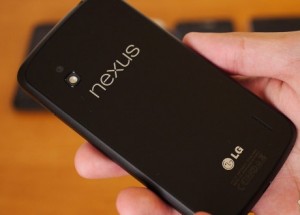
Google and LG partnered on this device which was released in November 2012 for only $299. Despite the low price, the Nexus 4 featured great build quality and flagship level specs. Google even dropped the price by another $100 only a year after the launch.
The low price and quality specs of the Nexus 4 made consumers and manufacturers alike realize that you could have flagship phones be affordable.
Features of the Nexus 4:
- 7 inch display for 1280 x 768 resolution
- 5 GHz processor with 2GB RAM
- 8MP camera
There you have it. 19 of the most influential smartphones ever released. What do you think is next? What phones and what features will further influence the market?
JR
[embedyt] https://www.youtube.com/watch?v=py7QlkAsoIQ[/embedyt]
